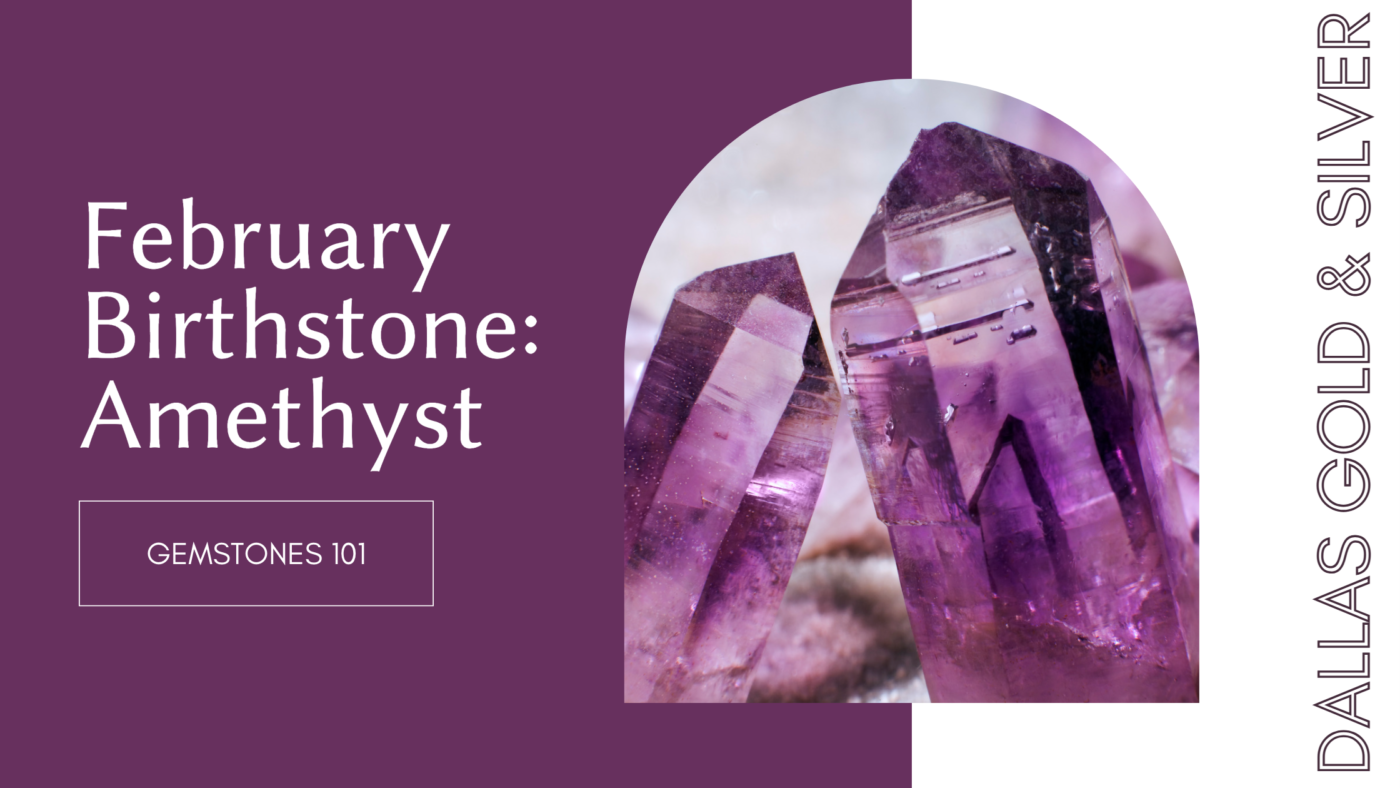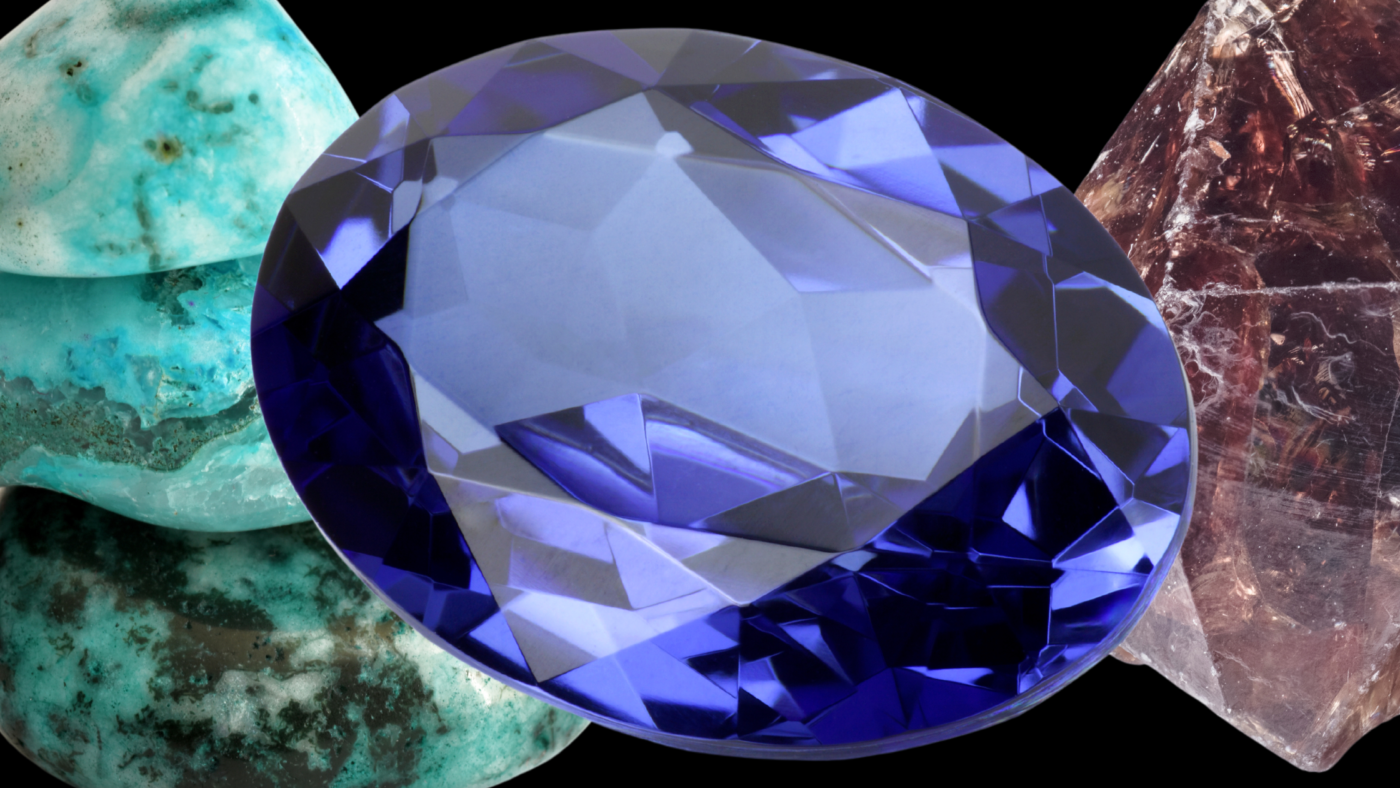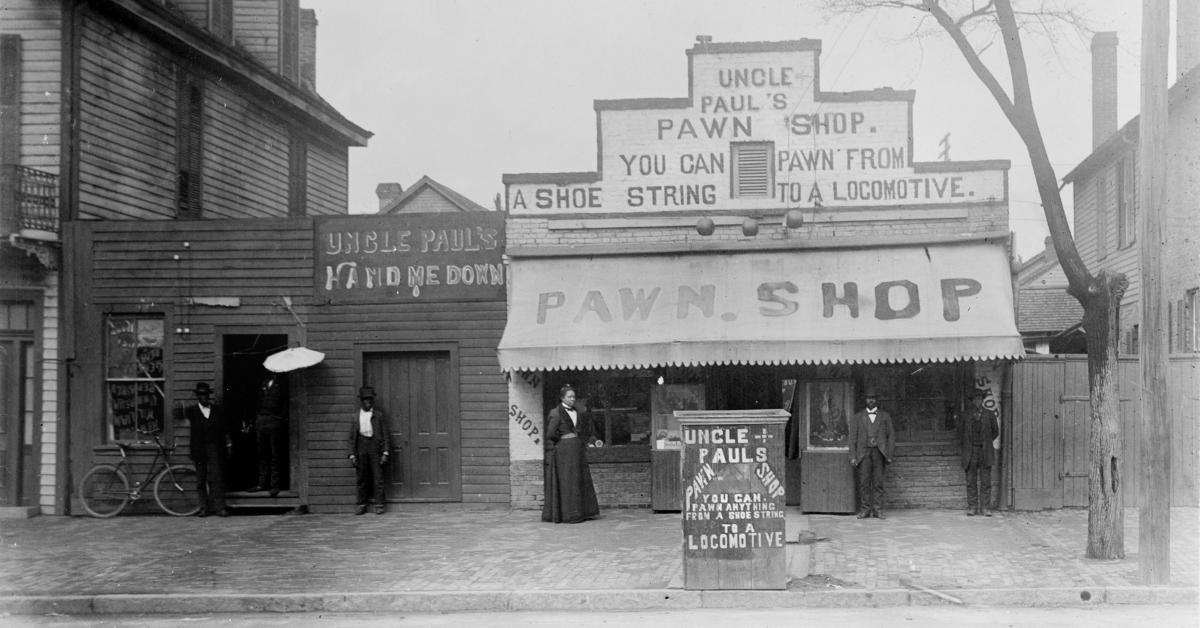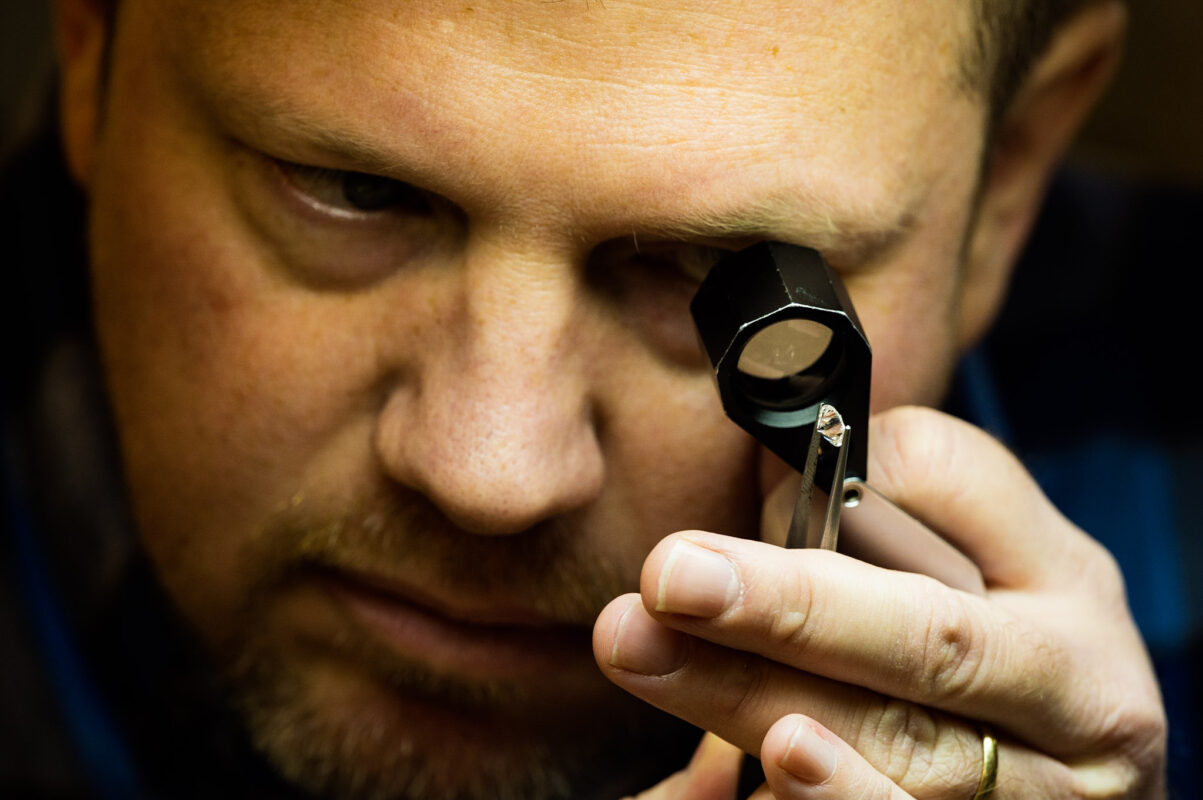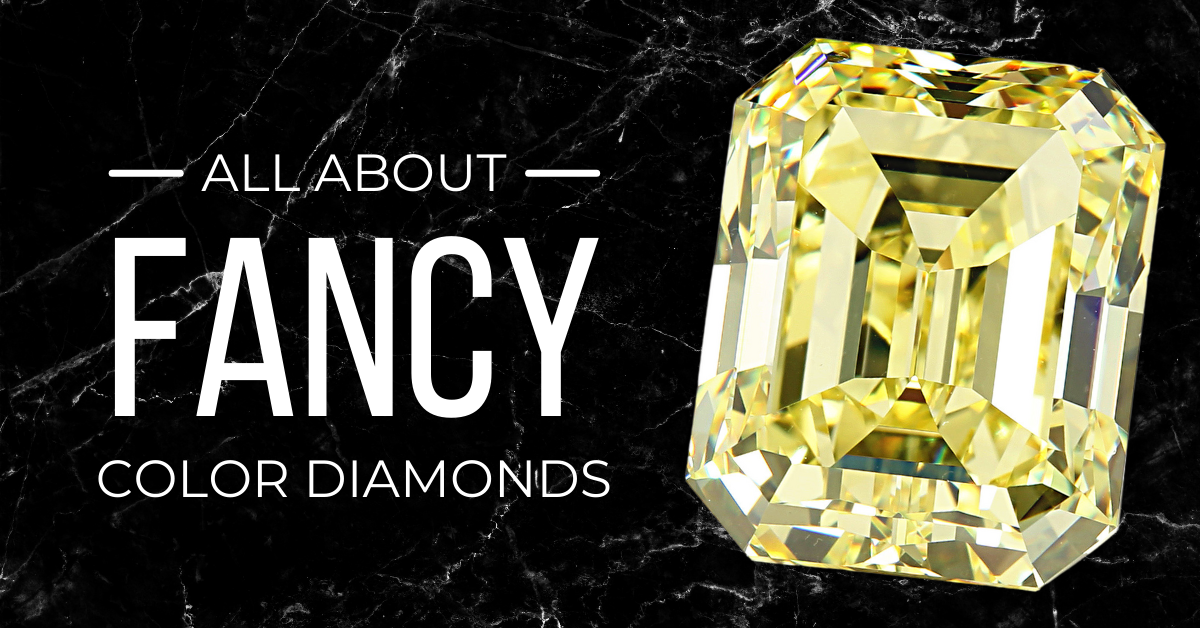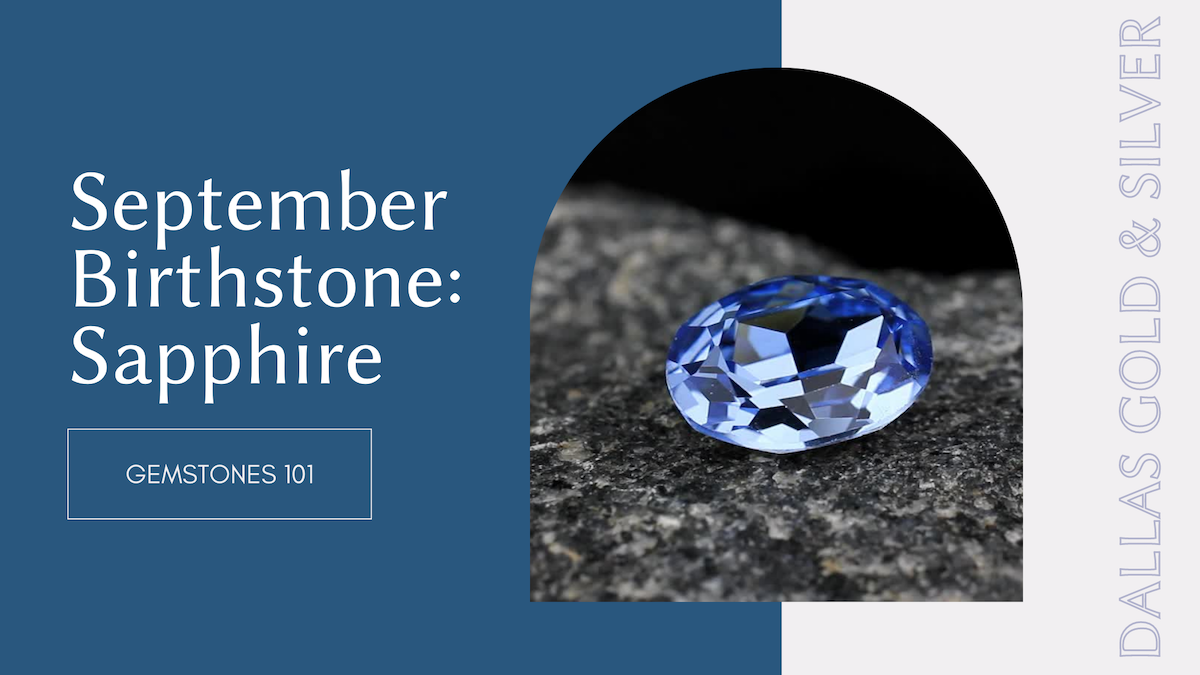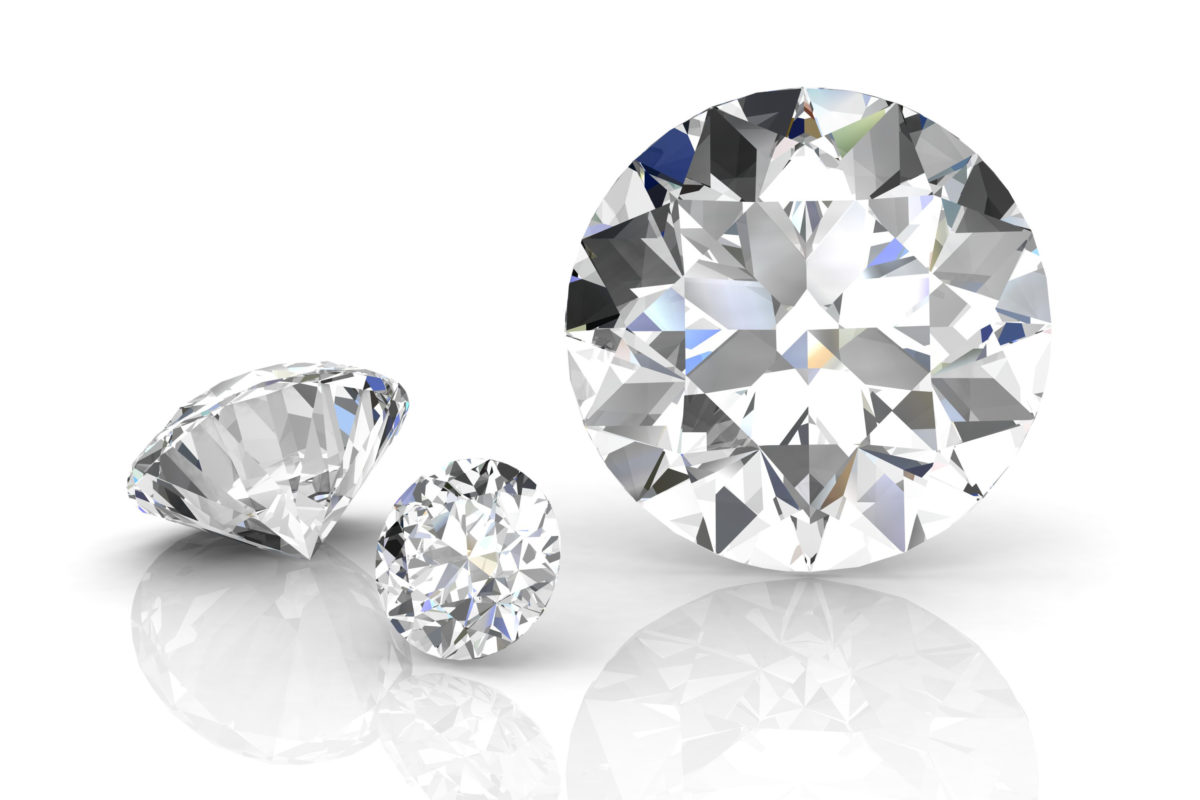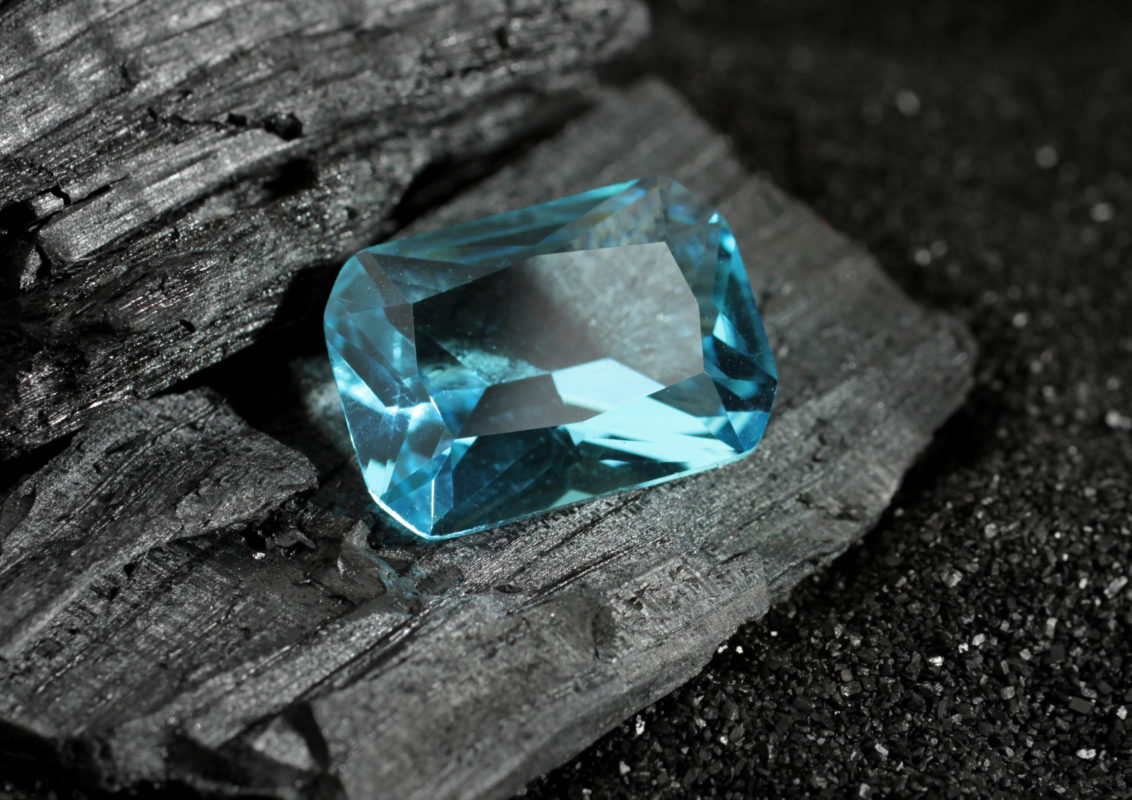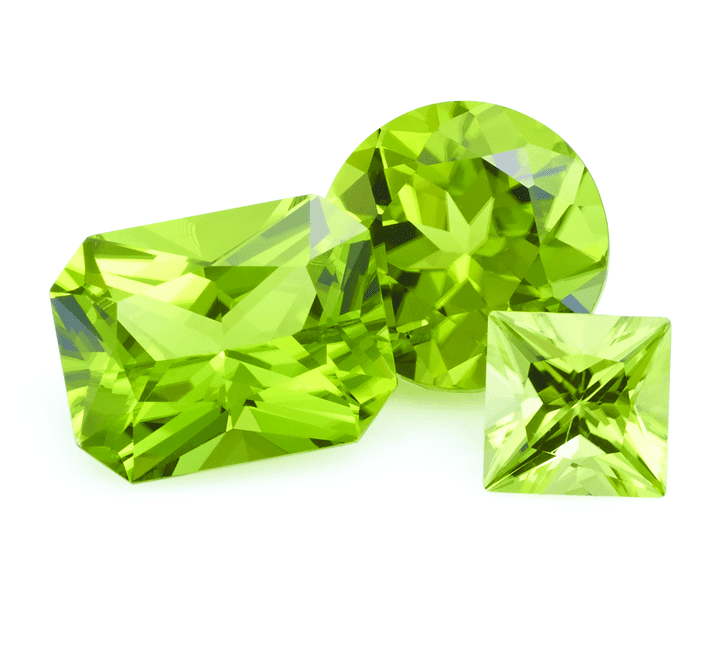February babies: your birthstone is amethyst! This regal stone was practically made to be the February birthstone — the patron of romantic love, St. Valentine, wore an amethyst ring carved with the image of cupid. Every month, we like to dive into each birthstone’s history, symbolism, and lore, so that you can better understand and appreciate the gemstone’s unique beauty and meaning. Amethyst is a stunning and popular gemstone, making for stunning jewelry. Let’s look at its history and the famous amethysts throughout the centuries. What is Amethyst? Amethyst is the purple variety of the quartz mineral species. Its color can range from cool and bluish, to reddish purple. Besides being the birthstone for February, it is also the gem for the 6th and 17th wedding anniversaries. Yes, there’s a gem for every anniversary! Today, amethyst is the most valued of the quartz variety. The History of Amethyst The amethyst has a long history, stretching back to Ancient Greece and Rome, where it was believed to have protective and healing powers. During the Middle Ages, the Catholic Church believed the gemstone’s purple hue was a sign of religious piety. Many bishops and other high-ranking clergy members wore the gemstone in jewelry as a sign of devotion. The ruling classes of Europe and Asia prized it highly and used it to make ornate jewelry and other decorative items. According to Greek mythology, amethyst was created by Bacchus, the Greek god of intoxication, wine, and grapes. He was pursuing a woman, Amethyste, who refused his affections and prayed to the gods to remain chaste. The goddess Diana responded, transforming Amethyste into a white stone. In shame, Bacchus poured a goblet of wine over the stone as an offering, dyeing its crystals purple. Famous Amethysts One of the most famous amethysts is the Heron-Allen amethyst, which has a curious and tragic history. The purple gemstone was discovered in the late 19th century and was believed to be cursed due to its association with a series of mysterious deaths and misfortune. The amethyst was eventually sold to a collector, who hid it to avoid further tragedy. Whether it’s a birthstone or a curiosity, amethyst is a fantastic gemstone that will bring pleasure and delight to anyone wearing it. Dallas Gold & Silver Exchange has a great selection of gemstone jewelry, including amethyst, ready to add to your collection. Visit any of our locations to shop.
Category Archives: Gemstones
December babies, you have the distinct privilege of multiple birthstones to choose from! From the swimmable blues of turquoise to the rich violet-blue tones of tanzanite, your birthstone jewelry can satisfy any style. Read on to learn more about the three beautiful December birthstones: turquoise, tanzanite, and zircon. The OG December Birthstone: Turquoise Turquoise may lack the sparkle of your rubies, diamonds, and sapphires, but it’s a unique stone that draws in admirers with its fascinating history, color, and texture. According to GIA, this December birthstone is only found in a few places: “dry and barren regions where acidic, copper-rich groundwater seeps downward and reacts with minerals that contain phosphorus and aluminum.” “Robin’s egg blue” is the most desirable color among jewelers and consumers alike. It varies in color from sky blue to green, depending on the amount of iron and copper it contains. According to the Smithsonian, “beads made from turquoise dating back to c.5000BCE have been found in Mesopotamia (present-day Iraq), making it one of the first gems to be mined and cut. It is relatively soft and easy to work and can be polished, made into beads, carved, and used for cameos.” Turquoise is porous, which means its color may deteriorate if frequently worn close to the skin. The Newcomer: Tanzanite A relatively new discovery, this December birthstone is a blue-violet variety of zoisite. Masai tribesman Ali Juuyawatu is credited with finding the first tanzanite crystal in 1967. Mistaking it as sapphire, he alerted a local fortune hunter named Manuel d’Souza, who quickly registered four mining claims. As its name hints, Tanzanite is mined commercially exclusively in northern Tanzania. While not quite as well-known as the “big 3” (emeralds, sapphires, and rubies), it has rivaled them in popularity. Therefore, powerhouse Tiffany & Co. recognized its potential and made a deal to become its main distributor in the 1960s. To Tiffany & Co., its rise in popularity was a sure thing. After all, a Tiffany vice president told The New York Times in 1969, “Tanzanite is the first transparent deep blue gemstone to be discovered in more than 2,000 years.” The color of this stone sets it apart. The rich, saturated violet-blue of tanzanite is unparalleled. Its high clarity and potential for large cut stones, along with the help of Tiffany & Co., lead to a boom in popularity during the 1960s and 70s. Although Tanzanites make great choices for everyday jewelry, they don’t rank as high on the Mohs hardness scale as diamonds or rubies. Consequently, this makes them more delicate. Jewelry designers protect the stones using various methods, such as invisible bezel prongs. The Wild Card: Zircon Zircon replaced lapis lazuli as an official December birthstone in 1952. According to GIA, Zircon occurs in an array of colors. The Zircon rainbow includes red, orange, yellow, green, blue, brown, and colorless. Colorless zircon contains brilliance and flashes of multicolored light called “fire.” Zircon is common in the earth’s crust and is fairly hard, with a Mohs hardness of 7.5. Scientists have determined it is the oldest mineral on earth, dating back 4.4 billion years! Blue zircon was popular during the Victorian ages and frequently featured in English estate jewelry during the 1880s. While zircon is a popular gemstone among consumers for its range of colors, blue is still a popular choice today! Looking for the perfect December birthstone piece for the December baby in your life? Shop any of our locations for fabulous gemstone jewelry!
When you first think of pawning jewelry or pawn shops, you may think of the TV show “Pawn Stars,” or maybe even a Quentin Tarantino film. However, pawn shops aren’t just an American practice, although more than 30 million Americans use pawn shops yearly. The practice of pawning has been around for centuries, dating back to ancient China. Today, it’s a $14.5 billion industry with 11,000+ pawnbrokers across the U.S. While pawning jewelry or other valuables might seem like a great way to get quick cash, educating yourself on the industry, the process, and its setbacks is essential. Here are some reasons why avoiding pawn shops might be in your best interest and some alternative options to get cash for your jewelry. What Are Pawn Shops, And How Do They Work? A pawn shop (also called a pawnbroker) is a business that loans money to people who bring in valuable items, which they then leave with the pawn shop. The valuables left behind are known as “collateral,” meaning security for the loan provided by the pawn shop. The person can get their valuable item(s) back from the pawn shop if they pay back the money the pawn shop loaned them with interest. However, suppose the person doesn’t repay the loan and interest within an agreed-upon timeline. In that case, the pawnbroker can sell the valuable item to another customer to get back the money the pawn shop loaned. How Do Pawn Shops Make Money? Pawn shops make money in two ways: (1) making personal loans and (2) selling unclaimed collateral items. Providing Personal Loans Pawn shops give out personal loans to individuals who relinquish custody of an item, such as jewelry or electronics. The amount a pawn shop is willing to lend is based on a few different factors: the value of the item, the pawnshop’s inventory at the time of the loan, and demand for the item. Since individuals seeking a pawn loan typically can’t qualify for a traditional bank loan, the risk of default is higher. That’s why pawn shops make loans with substantially higher interest rates than banks typically charge for personal loans. State law governs the amount of interest a pawn shop is allowed to charge. In Texas, the maximum pawn shop rate is 240% APR! That’s high! Reselling Pawn shops’ second primary income source is retail sales on unclaimed merchandise and items purchased outright from individuals. How Much Will Pawn Shops Give For Your Jewelry? If you are considering pawning jewelry, you might wonder how much pawn shops offer. Unfortunately, selling your jewelry to pawn shops guarantees the lowest amount of money in exchange for your items, thanks to the business model we outlined above. While pawn shops tend to offer more money to purchase items outright than to lend against them, it still will only get you about 50% of the value of your jewelry. Even if you need cash in a pinch, there are more lucrative ways to sell and get more out of the value of your jewelry. Alternatives to Pawning Jewelry If you want more money out of your jewelry, there are better ways! It also makes sense to outright sell jewelry you no longer want or need, rather than taking out a loan with a pawn shop. Those interest rates are no joke, especially in Texas! Here are some other, more lucrative, ways to sell your jewelry: Selling Online While this isn’t a great option if you need cash on the spot, you can sell your jewelry online to get more value out of your jewels. eBay is a great, safe option for everyday sellers. If you end up needing to do an in-person transaction, here are some do’s and don’ts to ensure your safety: DON’T agree to meet strangers alone. DON’T give out your address. DO meet in a safe, public place. DO accept cash only. Dallas Gold & Silver Exchange We’ve been around since the 1960s. We’ve stood the test of time by offering customers the most for their jewelry and being a trustworthy source of information. If you don’t believe us, shop around before you come to see us! We’ll give you the best offer and the best experience with our friendly, knowledgeable associates. You can bring your jewelry to any of our metroplex locations during our business hours at your convenience. No appointment is necessary. Want to learn more about the selling process at Dallas Gold & Silver Exchange? Let Loreina walk you through the easy process by clicking the video below!
Humans have spent thousands of years entranced by gemstones and precious metals. In some ways, we’re like fish – we’re attracted to shiny things! That’s why jewelry and gemology are such fascinating subjects with rich histories. It’s also why it’s so difficult to tell the real deal from the imitation. While costume jewelry and diamond alternatives are beautiful accessories, they won’t get you the cash that a *real* piece of jewelry will. Here are our tips to distinguish the real jewelry from the fake… and how to know when to seek a professional’s opinion. Precious Metals While we see today’s Olympic champions bite their gold medals, we don’t suggest this course of action for actually testing whether or not your gold is real. The history of the “gold bite test” dates back to merchants who would trade gold coins for goods. If their bite left teeth marks, the coin was deemed a fake since forgers would alloy their gold coins with other metals, including lead. In fact, some Olympians have even chipped their tooth whilst chomping down on their hard-earned medals! So, please (please) don’t do this. There’s a much easier (and dentist-approved) way to test the validity of the precious metals in your jewelry: look for stamps. Jewelry will often have teeny-tiny marks stamped on them in order to indicate their metals and fineness. We suggest getting our your readers for this. Here are some popular marks and what they mean: Metal US Fineness Marks International Fineness Marks 9- or 10-karat gold 9K or 10K 375 (37.5% pure gold) or 417 (41.7% pure gold) 14-karat gold 14K 585 (58.5% pure gold) 18-karat gold 18K 750 (75.0% pure gold) 24-karat gold 24K 999 (99.9% pure gold) Platinum PT 950 Sterling Silver 925 or sterling 925 Some jewelry pieces are unmarked, or the mark might be damaged. In this case, you can always bring the piece into one of our locations for a free check – no appointment is needed. Diamonds vs. Diamond Alternatives While metals have markings that can help the average consumer distinguish the real from the imitation, diamonds are a little trickier. An untrained eye can typically spot a real diamond, however there are a few diamond simulants that can dupe jewelry enthusiasts: Cubic Zirconia (or CZ) If you’ve ever shopped for an engagement or wedding ring at a big box store, you might know that CZ is used to simulate a diamond to visualize what it would look like in a certain setting. There are a few key differences to distinguish CZ from a real diamond. First, the dispersion of a CZ is much higher than that of a diamond. This means that the CZ will break up the light into a larger spectrum of colors than a diamond will. Second, most CZs are completely colorless. This is rare in real diamonds – a colorless diamond falls into the D color category on the diamond color scale. Even really stunning diamonds will have a twinge of yellow, while you won’t typically see this in CZs. Synthetic Moissanite This is a relatively newer diamond alternative that has recently gained popularity. Similar to the CZ, it also has more dispersion than that of a natural diamond. Natural moissanite is so rare, that if you’re looking at moissanite in jewelry, odds are that it’s synthetic. According to Brilliant Earth, “The most effective way to tell moissanite apart from a diamond is to use a loupe to look through the top, or the crown, of the jewel at an angle. You will see two slightly blurred lines that indicates a double refraction, an inherent quality of moissanite.” White Sapphire or White Topaz Unlike the previous alternative, white sapphire and white topaz will have less dispersion than a natural diamond. Glass Glass is more transparent than diamond. Another easy way to tell the difference is to check for inclusions Most diamonds will have inclusions that can either be seen with the naked eye or with a jeweler’s loupe. Glass will not have any inclusions as it will be hand-cut to simulate a diamond. Lab-Grown Diamonds You might be asking, “what about lab-grown diamonds?” Well, lab-grown diamonds technically are diamonds. However, since they’re man-made and manufacturing is ever-growing, they don’t fetch the same prices as natural diamonds since they are easier to come by. In fact, it’s often speculated that the value of these man-made alternatives will go down rather than up like their natural counterparts. Lab-grown diamonds can fool cheap diamond testers, so if you’re wondering whether or not yours was grown in a lab we recommend bringing it in for a closer look. Emeralds, Sapphires, and Other Gemstones There aren’t really any great DIY tests for gemstones, so the simple answer to this is just to bring it in to one of our GIA Graduate Gemologists. They’ll easily be able to distinguish real gemstones from imitations. While we don’t typically purchase pearls, there is a DIY method to check if they’re real or not. While we don’t encourage using your teeth to test gold, it is okay to use your teeth to test pearls. Simply rub the pearl against your teeth! If it feels grainy, you’ve got a genuine pearl on your hands. If it feels smooth, odds are that it’s not real. Other Tips to Distinguish Real Jewelry From The Fake We always recommend bringing in an item for our experts to take a look at, especially if you wish to sell it. Whether you sell it to us or not is up to you – and we’ll look at it for free, so there’s nothing to lose. You can visit us at any of our DFW locations in Dallas, Euless, Frisco, Grand Prairie, Grapevine, and Lewisville – no appointment needed.
Are you looking for a unique twist to the traditional diamond? Then, we have just the stone for you, no matter what your favorite color is. Read on to learn more about fancy color diamonds! About The Fancy Color Diamond According to GIA, a diamond falls under the category of fancy color if it is yellow or brown beyond the GIA D-Z color grading scale or diamonds that exhibit any other color face-up. This includes colors like red, green, blue, pink, and even black. If you’ve read our post about the four C’s of diamonds, you’ll know that white diamonds typically fetch a higher price. However, the opposite is true of Fancy Color Diamonds. The stronger that color is, the more valuable the gem will be. However, if you want more bang for your buck on a fancy, go for a yellow or brown. They aren’t as “desirable” as some other colors, but they sparkle just as much! Famous Fancies The world’s most famous diamond, The Hope Diamond, is a fancy color diamond. It’s a 45.52-carat diamond, and its color has been most recently described as fancy dark grayish-blue. It has a storied history spanning back to the late 1600s. Famous owners of this gem include Marie Antoinette and Louis XIV. It is on display in the Smithsonian National Museum of Natural History in Washington, D.C today. The Black Orlov diamond is another well-known fancy, with a history as dark as the stone itself. Some say the diamond is cursed — it’s even rumored to be responsible for three suicides throughout the first half of the 20th century. Charles F. Winson purchased the gem in the 1950s and chose to break its (alleged) curse by cutting the diamond into three pieces. The 67.50-carat cushion-shaped diamond is on display in the American Museum of Natural History; however, the whereabouts of the remaining diamonds are a mystery. Fancy Origins Diamonds with fancy colors have traditionally been a small part of the jewelry business, but their popularity has grown over the past few decades. Most come from India, South Africa, and Australia, but other mines in Brazil, Venezuela, and Indonesia produce fancy color diamonds. How are fancy color diamonds made? During a natural diamond’s creation, trace elements such as nitrogen, sulfur, and boron and color diamonds in shades of yellow, green, and blue. However, you won’t find trace chemical elements in pink diamonds. Instead, “the color is caused by a distortion in the diamond’s crystal lattice, created by intense heat and great pressure from all directions after the stone’s formation,” according to the Victoria Museum in Australia. The distortion misplaces many carbon atoms from their normal positions and alters the qualities of light that allows us to observe the stone as pink. Whether you’re looking for a white diamond or a fancy color stone, we have the best selection in DFW. Come see why we’ve stood the test of time at the original Dallas Gold & Silver Exchange.
Those born in September are lucky enough to call the sapphire their birthstone. Sapphire is also the gemstone for the 5th and 45th anniversaries. Read on to learn more fun facts about the September birthstone! About The September Birthstone The sapphire comes from the corundum family, which includes rubies. Blue sapphires have adorned crowns and regal robes for centuries. Its stunning blue hue is iconic — it’s the standard against which other blue gems are measured. According to GIA, the name “sapphire” can also apply to any corundum that’s not ruby red — those are categorized as rubies. We call any sapphire that’s not blue or red a “fancy” sapphire, which comes in various colors. Both blue and fancy sapphires come from Madagascar, Tanzania, Sri Lanka, Myanmar, and Australia. Beyond (Sapphire) Blue While we typically think of sapphires as blue, fancy sapphires range in every color except ruby red. This includes pink, green, orange, and other hues. How do they get to be each color? First, trace elements of iron and titanium turn corundum blue. While chromium can cause the red shade of ruby or pink of pink sapphire. Colorless corundum also makes an excellent replacement for diamonds; however, it is a rare phenomenon and difficult to find. As if you didn’t already have enough options for sapphires, they also come in color-changing varieties. The stones change color under different lighting! History of The Sapphire The lore of sapphires has fascinated humans for centuries and has been associated with royalty and mystique. According to GIA, kings and queens believed blue sapphires protected their owners from envy and harm in ancient Greece and Rome. I doubt it protected their owners from envy — I’d undoubtedly be envious of a gorgeous sapphire piece! The royal history of the sapphire includes some more modern history. Princess Diana’s engagement ring, now Kate Middleton’s, is well-known as one of the most famous engagement rings ever.
April babies, you are lucky enough to call the diamond your birthstone! This brilliant stone embodies the glimmer of the fresh beginning of spring perfectly. It’s no surprise that this is our favorite birthstone — after all, we are diamond experts! While you may know quite a bit about girl’s best friend, keep reading to learn more about the diamond as April’s birthstone. About the April Birthstone Deemed the “King of all Birthstones,” a diamond is also the designated gift for the 60th and 75th wedding anniversaries. While it’s unclear exactly when the diamond was designated the April birthstone, it’s one of the few months with just one birthstone. After all, what gemstone could compete with a diamond as April’s birthstone? The diamond is a 10 on the Mohs Hardness scale, making it the strongest gemstone. Diamonds are so strong, in fact, they remain the most scratch-resistant material known to humanity according to Forbes. Experts study diamonds closely and grade them according to rigorous standards. The Gemological Institute of America (GIA) remains the foremost world authority on diamonds. We always encourage customers to purchase a diamond graded by GIA. That way, you know the exact cut, color, clarity and carat weight of your stone. A diamond is a huge investment — it’s best to have as much accurate information as possible on your stone. Diamond History Diamonds have had a profound effect on our world’s history. Records show diamonds were traded as early as fourth century BCE. Of course, diamonds have always drawn the eyes of the rich and privileged. Today, diamonds are mined around the world. Many African countries such as Botswana, and the Democratic Republic of the Congo are major producers of rough diamonds. For centuries, this April birthstone was believed to have healing powers and to ward off poverty. In today’s society, diamonds are the ubiquitous symbol of love and marriage and have become more accessible across all shapes and sizes. People are innovative, and our fascination with diamonds has been ingrained in us for centuries. That’s why humans have figured out how to create the gleaming April birthstone in science labs — no mining required. While lab-grown diamonds don’t hold their value like natural stones, they remain an interesting player in the jewelry world.
When the calendar hits March, Dallasites know to get ready for beautiful days mixed with spring showers. That’s why aquamarine is the perfect gemstone for those with March birthdays. The sparkle and color perfectly embody the mix of sunshine and rain that spring brings. However, aquamarine connects to a different kind of water source: the ocean. The name Aquamarine comes from the Latin word for “water of the sea,” and the bluish hues are said to bring a sense of calm. Sailors would often carry this gemstone on their ships in hopes of calmer water. Read on to learn more about this March birthstone! What is Aquamarine? Aquamarine is the green-blue to blue variety of the mineral beryl. Its color is usually a light pastel greenish blue. Darker blue aquamarines are typically more desirable, so heat treatments deepen bluish hues. The Aquamarine is fairly durable, ranking 7.5 to 8.0 on the Mohs hardness scale, and can be mined at high elevations in Pakistan’s Karakoram Mountains, according to GIA. Additionally, miners find Aquamarine in Brazil, China, Kenya, Madagascar, Ukraine, and even here in the United States. Aquamarine was designated the March birthstone in 1952 and is the gem of the 19th wedding anniversary. As a member of the beryl family, it is closely related to emerald and morganite. Aquamarine Carvings and Jewelry Like other beryls, aquamarine forms large crystals suitable for large carvings and fashioned gems. While carvings are popular for translucent to opaque aquamarine, the deeper blue aquamarines in the right hands make beautiful jewelry. Gemologist can cut Aquamarines into almost any shape, and faceted aquamarines often have no eye-visible inclusions. A popular shape for this stone is round or oval brilliant cuts and emerald cuts. In some stones, cut-cornered cuts prevent chipping. Aquamarine is a great option for jewelry because it is readily available. Additionally, it has an intense sparkle even under low light conditions. During her wedding, Meghan Markle has sported this stone in a cocktail ring. As a result, interest in the aquamarine resurfaced. She received the unique piece from her husband, Prince Harry, during their wedding. According to Gem Society, the yellow gold cocktail ring belonged to the late Princess Diana. View this post on Instagram A post shared by Clayton Delville – Gem & Jewel (@clayton_delville) Even if it isn’t your birthday or 19th wedding anniversary, we think aquamarine is a fabulous gemstone for all occasions. Visit us to see some beautiful aquamarine pieces in person! If we don’t have the right piece, we’ll find or make one for you with our talented jewelers.
2019 was a big year for celebrities getting down on one knee. While we’re entertained by every aspect of celebrity engagements and weddings, we do pay attention to one aspect in particular: the celebrity engagement rings, of course! Here are our favorite celeb sparklers from this past year: Scarlett Johansson View this post on Instagram 11 cts light brown diamond, type 2A. A post shared by TAFFIN (@taffinjewelry) on Jun 29, 2019 at 12:26am PDT Black Widow and Jojo Rabbit star, Scarlett Johansson, will tie the knot with Saturday Night Live‘s Colin Jost. The engagement ring was designed by Taffin by James de Givenchy, and whether or not the ring was custom-made for Johansson remains to be seen. The details on this ring have been kept under wraps — ScarJo is a couple that values their privacy — however, the picture above is believed to be either Johansson’s ring or its döppelganger, according to Harper’s Bazzar. The diamond is estimated to be 11 carats and is a specialty cut with a unique smoky color, making this a celebrity engagement ring that is difficult to take your eyes off of! Hilary Duff View this post on Instagram Cheesy IM GETTING MARRIED As of one month ago post! A post shared by Hilary Duff (@hilaryduff) on Jun 4, 2019 at 12:31pm PDT This Disney star is all grown up and getting married! Duff is set to wed singer-songwriter Matthew Koma as of May 4, 2019. To match Duff’s style, Koma popped the question with a classic stunner. According to Brilliant Earth, Duff’s ring seems to feature a cushion-cut diamond that weighs approximately 3 to 4 carats set on a split shank white gold or platinum band. This celebrity engagement ring brings new meaning to the term “timeless!” Jennifer Lopez View this post on Instagram she said yes ♥️ A post shared by Alex Rodriguez (@arod) on Mar 9, 2019 at 5:34pm PST What do you get when you combine JLo and ARod? The powerhouse couple of 2019! Jenny From the Block is set to wed ex-Yankees player, Alex Rodriguez. They were engaged in March when Rodriguez popped the question with a whopping 18-carat high-quality emerald cut engagement ring, according to CNBC. This type of ring is what most people picture when they hear “celebrity engagement” — big and sparkly! While there’s never been an official disclosure of the ring’s price, it is estimated at $1.8 million. Katy Perry View this post on Instagram full bloom A post shared by KATY PERRY (@katyperry) on Feb 15, 2019 at 2:07am PST Singer Katy Perry got engaged to actor Orlando Bloom earlier this year and has a unique ring to show for it. With an estimated 2 carat ruby featured in the center and 2.5 carats worth of diamonds in a floral halo, this ring walks the line between traditional and modern beautifully. According to E!, the ring would retail at about $5 million. Bindi Irwin View this post on Instagram July 24th 2019 ❤️ On my birthday I said ‘yes’ and ‘forever’ to the love of my life. Chandler, close to 6 years ago I fell in love with you and every day since has been a whirlwind of adventure and true happiness. I’m so looking forwarding to spending our forever together as your wife. Here’s to a lifetime of friendship, purpose and unconditional love. — Now let’s get married already! A post shared by Bindi Irwin (@bindisueirwin) on Jul 24, 2019 at 3:30am PDT Bindi Irwin, daughter of the late Steve Irwin, is engaged! Her stunning engagement ring features a lab-grown 2.01-carat oval diamond and recycled rose gold, to express her dedication to conservation. We think Bindi would approve of our practices — our focus is on recommerce, so our metals are recycled, too! Oval diamonds are very popular for today’s bride. According to Today, they are the most popular diamond option and have been for the past few years! Hoda Kotb Photo courtesy of Today. Hoda Kotb, the Today Show anchor, is engaged to her boyfriend of six years. Kotb and her now-fiancé, Joel Schiffman, share a 2-year-old daughter, Hayley Joy. He chose a beautiful bezel-set, radiant-cut diamond with a sapphire pave halo to pop the question while they were on a beach vacation!
June isn’t the only month that gets three birthstones. Bestowed upon those with August birthdays are the gemstones peridot, sardonyx and spinel. Each gemstone is vastly unique from the other and gives August babies a number of options to choose their perfect look! Read on for details on each August birthstone. Peridot Peridot is the primary August birthstone. A gem variety of the mineral olivine, peridot ranges from yellowish green to greenish yellow and has been often mistaken for emerald and topaz throughout history. In fact, some historians speculate that Cleopatra’s vast emerald collection was actually comprised (partially) of peridot. Not only is peridot the August birthstone, but it’s also the 15th anniversary gemstone. This is a great gift option for every budget, depending on the size of the peridot. While large, grass-green peridots are more expensive, there are plenty of smaller stones that would fit a smaller budget. Sardonyx Sardonyx is the original gemstone — the OG, if you will — assigned as the August birthstone. When peridot joined the party, it became the primary August birthstone ahead of sardonyx. As the name suggests, sardonyx combines alternating layers of sard and onyx. These two types of mineral chalcedony separate to create reddish and white zerbra stripes. The finest examples of sardonyx display sharp contrasts between layers. According to the American Gem Society, “sardonyx is widely available and relatively inexpensive as gems, beads, and jewelry. It is often carved into cameos, intaglios, and brooches to show the color contrast between layers.” Spinel Remember how we said the ruby is the most valuable colored gemstone besides diamonds? Well, if you’re looking for a budget-friendly option for a ruby, that’s where the spinel gemstone comes in handy. It comes in a wealth of colors, including intense red, and is less pricey. Often mistaken for other gemstones throughout history, the spinel has been dubbed “the great imposter.” In fact, one of the most famous “rubies” in the world, the Black Prince’s Ruby, in the British Imperial Crown is actually a red spinel. Not only is the gemstone strikingly beautiful, it carries great historical meaning. Just how great is its historical meaning? We can thank spinel for the study of gemology! As a result of the spinel’s similarity to ruby, people began to study the gemstones and their differences. Without spinel, we may not even have birthstones!
- 1
- 2

